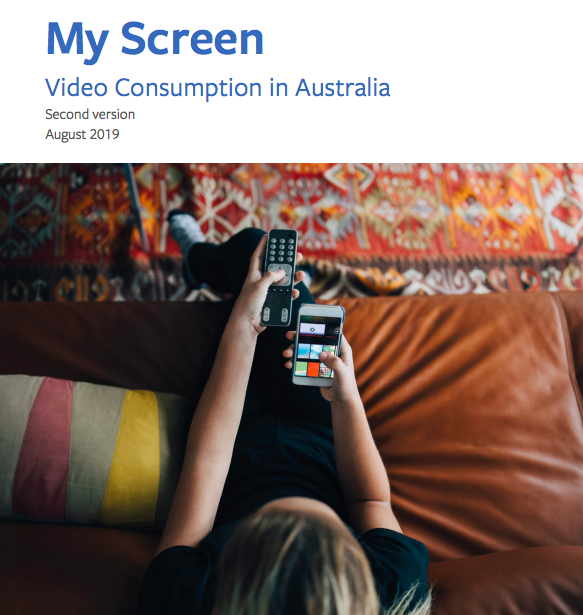Facebook re-releases My Screen report to ‘challenge your understanding of Australia’s video consumption habits’
The divisive report which sought to unlock the truth around how Australians actually consume video content has hit the market again, with consultancy PwC saying, despite the difficulties it has faced, the purpose of the report has not changed.
The new My Screen report, however, has a number of notable differences from the original, including the removal of both Nielsen and OzTAM data.
The purpose of the report, according to PwC, was “to provide marketers with a perspective into video use in Australia and how to reach consumers via this medium”. Since its release, however, questions were raised over its methodology, use of Nielsen data, and the exclusion of consumers’ use of connected TVs.



just walk away
With this and then their content announcement with all the TV networks this morning, Facebook have just bitchslapped the entire local media industry.
Revenge has been served cold.
Can’t wait for the always super impartial and very credible ThinkTV to come out and refute this – as though PwC and Roy Morgan aren’t credible sources or research partners.
Whether the data is accurate or not, I don’t see any key insights or recommendations for marketers to do anything differently / better at all. So the biggest reach platforms for video consumption are TV, SVOD, Youtube and Facebook – so what? Did anyone not already know that? Possibly the most pointless piece of research I’ve ever read
Did you read last page 3? Or even read it at all?
Still the ability for FB to contend that “soundless” in stream video is a like for like comparison.
70% of In-Stream is consumed with the sound-on.
Thanks @fact check I missed this in the report, could you point me to it
What a ground-breaking move – fall back to 7-day recall.
Why not trot out some more of those Facebook campaign reach reports which generally reported achieving around 140% reach in a week?
Laughable.
Thanks Facebook and PWC for enlightening us that apparently Blackadder is more liked than Australia’s highest rating television shows
Thanks @fact check I missed this in the report, could you point me to it